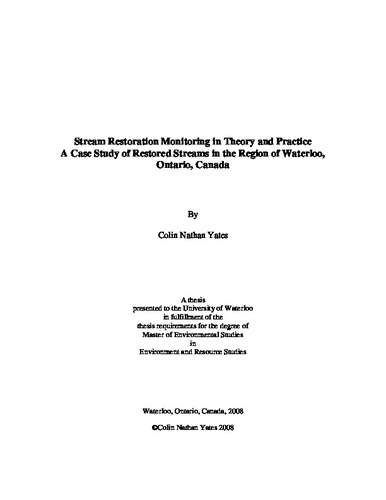| dc.description.abstract | Recently, the importance of quantifying the success of stream/river restoration projects has become a priority in restoration. The absence of ecological monitoring of stream restoration has been made very evident, resulting in the questioning of the viability of restoration activities that have taken place, the ecological approaches used and of restoration as a field of study as a whole. Priority has been set towards illustrating what a successfully restored stream should consist of with development of conceptual frameworks. My study builds upon that concept, by drawing a methodological framework that illustrates how successful stream restoration projects should be quantified using a stream restoration monitoring protocol; asking the question whether a stream restoration monitoring protocol can be created and whether it can appropriately quantify the success of restored stream reaches; further, what assessment technique(s) are best suited for monitoring; ecological, geomorphic or a hybrid approach. In Waterloo, Ontario 29 restored test stream reaches were assessed using benthic macroinvertebrates. Benthos community composition was described using Family Richness, Simpson’s Diversity, % EPT, and % Chironomidae. The same reaches were also assessed using a geomorphic assessment technique I designed for this study, which focused on channel stability measures and substrate type as habitat. The methodology was then used to develop information on disturbed (n=7) and natural (n=5) reference reaches in Waterloo. The reference condition approach was used to quantify the relative placement of the restored test streams to reference condition. The ecological assessment technique was best able to quantify the success of a restored reach, by showing linear relationships between benthic metrics in a PCA analysis (0.657). The geomorphic approach, as analyzed by a Non-metric multidimensional scaling test did not consistently evaluate or significantly distinguish between restored reaches and reference conditions, shown by a stress of 25.31. However, a canonical correspondence analysis showed that there are some relationships, although weak, between the ecological approach and geomorphic approach (0.696; p=0.03). This study showed that it is possible to quantify the success or lack of success of restored stream reaches and it is recommended that a hybrid approach be used when monitoring for stream restoration success. | en |

